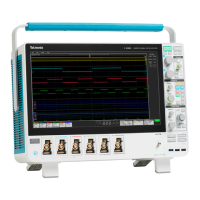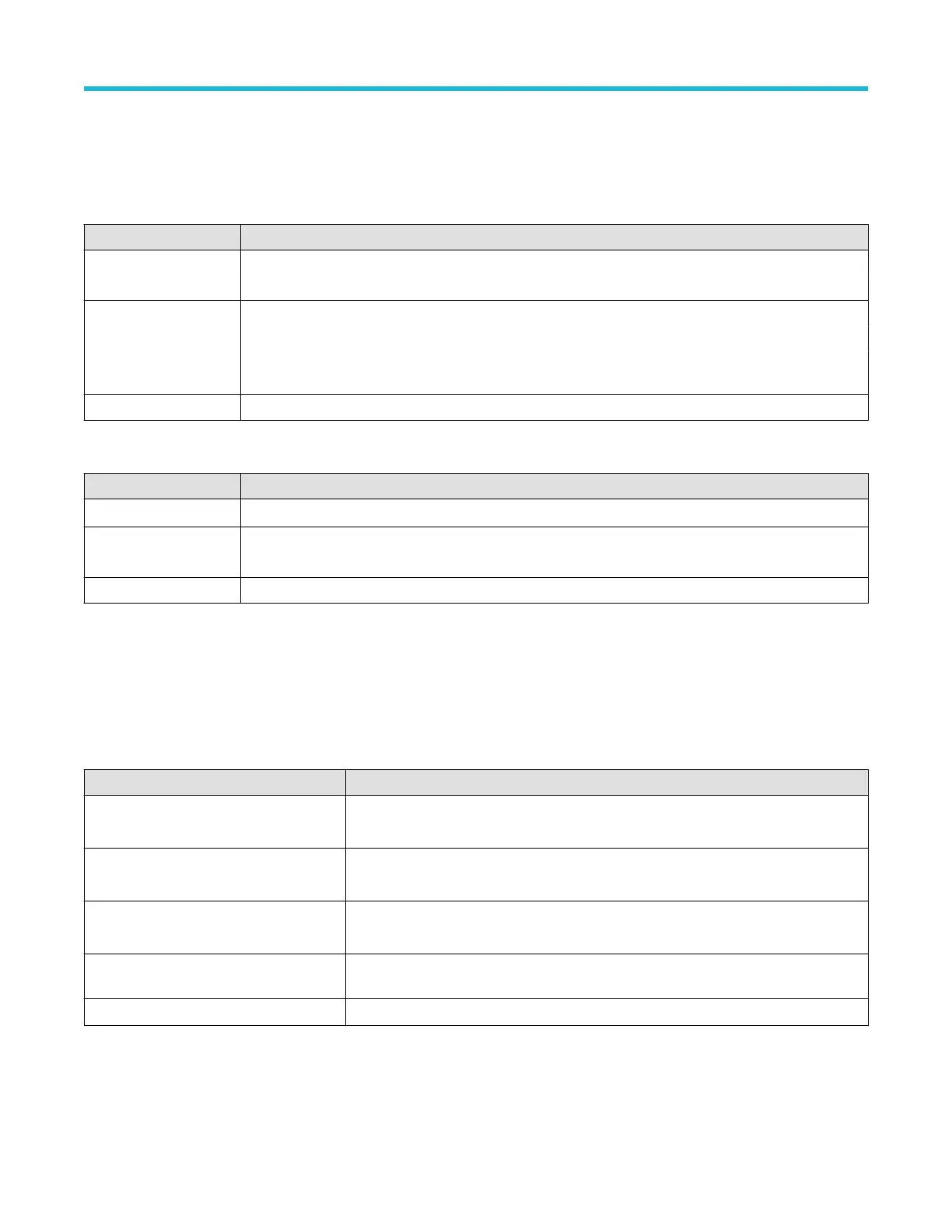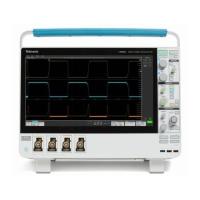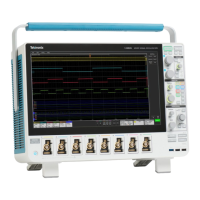Operating requirements
Use the instrument within the required operating temperature, power, altitude, and signal input voltage ranges to provide the most accurate
measurements and safe instrument operation.
Table 1: Environment requirements
Characteristic Description
Operating temperature 0 °C to +50 °C (+32 °F to +122 °F)
For proper cooling, keep the sides and rear of the instrument clear of obstructions for 2 inches (51 mm).
Operating humidity 5% to 90% relative humidity (% RH) up to +40 °C (+104 °F), non-condensing.
5% to 55% RH above +40 °C up to +50 °C (+104 °F to +122 °F), non-condensing.
5% to 90% RH at temperatures up to +60°C (+140°F), non-condensing, and as limited by a maximum
wet-bulb temperature of +39°C (+102°F).
Operating altitude Up to 3000 meters (9842 feet)
Table 2: Power requirements
Characteristic Description
Power source voltage 100 V - 240 V
AC RMS
, ±10%, single phase
Power source frequency 50/60 Hz, 100-240 V
400 Hz, 115 V
Power consumption 400 W maximum
Input signal requirements
Keep the input signals within allowed limits to ensure the most accurate measurements and prevent damage to the analog and digital
probes or instrument.
Make sure that input signals connected to the instrument are within the following requirements.
Input Description
Analog input channels, 1 MΩ setting,
maximum input voltage at BNC
300 V
RMS
Measurement Category II
Analog input channels, 50 Ω setting,
maximum input voltage at BNC
5 V
RMS
, at 100 mV/div, with peaks ≤ ±20 V (Pulse Width ≤200 us)
Measurement Category II
Digital input channels, maximum input
voltage range at digital inputs
Observe probe ratings
TLP058; ±42 V
P
Ref In maximum input voltage at BNC (rear
panel)
7 V
PP
Aux In trigger input ±5 V
RMS
Installing your instrument
5 Series B Mixed Signal Oscilloscopes MSO54B, MSO56B, MSO58B Quick Start Manual 17

